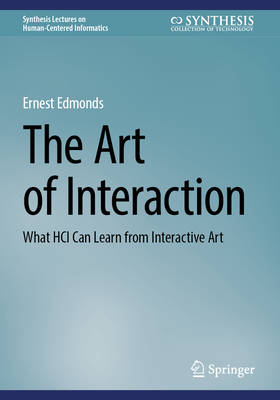
- Afhalen na 1 uur in een winkel met voorraad
- Gratis thuislevering in België vanaf € 30
- Ruim aanbod met 7 miljoen producten
- Afhalen na 1 uur in een winkel met voorraad
- Gratis thuislevering in België vanaf € 30
- Ruim aanbod met 7 miljoen producten
Omschrijving
This book continues to explore the question of how Human-Computer Interaction (HCI) can learn from art. It considers how the HCI research agenda can be advanced by looking at art research and how HCI practitioners can improve creativity support and the amplification of that important human capability within their work. This book answers these questions from the perspective that interactive art has become a common part of life as a result of the many ways in which the computer and the Internet have facilitated it. HCI is as important to interactive art as color mixing is fundamental to painting. The book reviews recent work that looks at these issues through art research. In interactive digital art, the artist is concerned with how the artwork behaves, how the audience interacts with it, and, ultimately, how participants experience and engage with art. The values of art are deeply human and increasingly relevant to HCI as its focus moves from product design toward social benefits and the support of human creativity. The book examines these issues through a series of case studies and also brings together a collection of research results from art practice that illuminate this significant new and expanding area. In particular, this book points readers toward a much-needed critical language that they can use to describe, compare, and frame research in HCI support for creativity. This second edition updates the material where appropriate and adds a new case study.
Specificaties
Betrokkenen
- Auteur(s):
- Uitgeverij:
Inhoud
- Aantal bladzijden:
- 80
- Taal:
- Engels
- Reeks:
Eigenschappen
- Productcode (EAN):
- 9783032142597
- Verschijningsdatum:
- 30/01/2026
- Uitvoering:
- Paperback
- Formaat:
- Trade paperback (VS)
- Afmetingen:
- 168 mm x 240 mm

Alleen bij Standaard Boekhandel
Beoordelingen
We publiceren alleen reviews die voldoen aan de voorwaarden voor reviews. Bekijk onze voorwaarden voor reviews.








